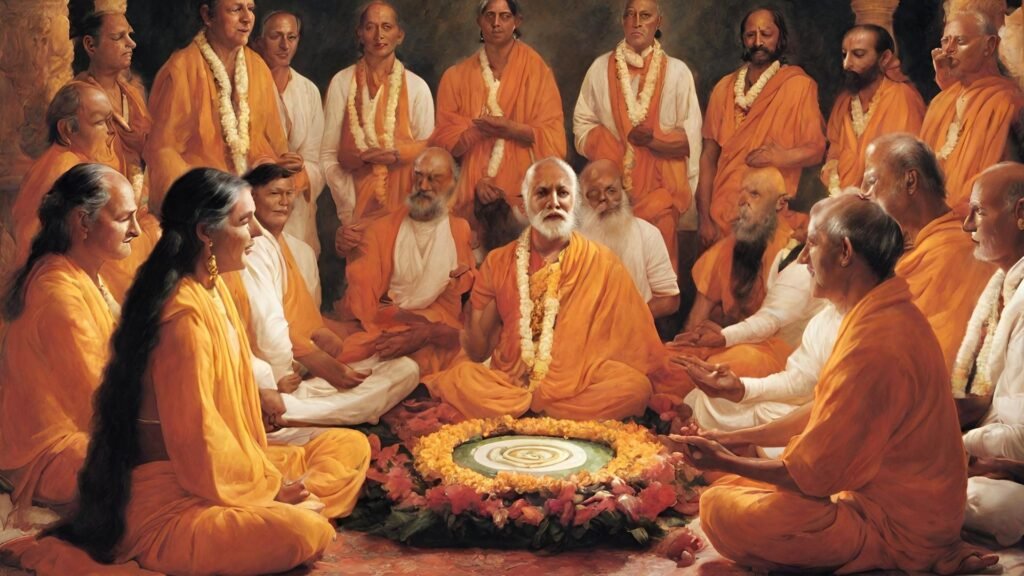Dr.Ashutosh Upadhyay
The Vedas are the oldest and most sacred scriptures of Hinduism, which contain a wealth of knowledge, wisdom, and spirituality. The Vedas consist of four main collections of hymns, mantras, rituals, and philosophies, namely the Rigveda, the Samaveda, the Yajurveda, and the Atharvaveda. Each Veda has four parts: the Samhitas, the Brahmanas, the Aranyakas, and the Upanishads. The Vedas are considered to be the divine revelations of the supreme reality, Brahman, and the source of all dharma, or righteous conduct.
The Vedas are not only religious texts but also cultural treasures that have influenced various fields of human endeavor, such as science, art, music, literature, medicine, astronomy, mathematics, ethics, law, and politics. The Vedas have also inspired many spiritual movements and traditions, such as Yoga, Vedanta, Vaishnavism, Shaivism, Shaktism, Buddhism, Jainism and Sikhism. The Vedas are the heritage of humanity and the pride of India.
However, in the modern era, the Vedas are often neglected, misunderstood, or misinterpreted by many people, who either disregard them as outdated or irrelevant or misuse them for sectarian or political purposes. The Vedas are also facing the threats of distortion, corruption, and loss, due to the lack of proper preservation, transmission, and dissemination. The Vedas need to be revived, restored, and respected, as they have the potential to offer solutions to the problems and challenges of the contemporary world.
One of the ways to appreciate and apply the Vedas in modern life is to understand and practice the Vedic rhymes and verses, which are the essence and beauty of the Vedic literature. The Vedic rhymes and verses are the poetic expressions of the Vedic seers, who composed them in various meters, rhythms, melodies, and languages, such as Sanskrit, Prakrit, Pali, and Apabhramsha. The Vedic rhymes and verses are not only pleasing to the ear and the mind but also powerful and effective in invoking divine grace and blessings.
The Vedic rhymes and verses have various benefits and purposes, such as:
- They enhance the memory, concentration, creativity, and intelligence of the reciter, as they require careful pronunciation, intonation, and comprehension.
- They purify the mind, body, and soul of the reciter, as they contain the sacred sounds, vibrations, and meanings that can remove the impurities, negativities, and obstacles in life.
- They elevate the consciousness, awareness, and realization of the reciter, as they reveal the profound truths, insights, and mysteries of the self, the world, and the supreme reality.
- They harmonize the individual, social, and cosmic order of the reciter, as they establish the connection, communication, and cooperation between the human, the divine, and the natural realms.
- They enrich the culture, tradition, and heritage of the reciter, as they preserve and propagate the values, ideals, and achievements of the ancient civilization.
Therefore, the Vedic rhymes and verses are important and relevant in modern lifestyle, as they can help us to achieve the goals of human existence, such as artha (wealth), kama (pleasure), dharma (righteousness) and moksha (liberation). The Vedic rhymes and verses can also inspire us to live in harmony with ourselves, others, and the environment, and to contribute to the welfare of society and the world.
Some of the examples of the Vedic rhymes and verses are:
- The Gayatri Mantra, is the most famous and revered mantra in Hinduism, and it invokes the solar deity, Savitar, for illumination and guidance. It is found in the Rigveda (3.62.10) and the Yajurveda (36.3), and it is recited as follows: Om bhur bhuvah svah
Tat savitur varenyam
Bhargo devasya dhimahi
Dhiyo yo nah prachodayat Meaning: We meditate on the glorious splendor of the radiant sun; may he stimulate our intellects. - The Shanti Mantra, which is a common prayer for peace and well-being, and which is found in various Upanishads, such as the Ishavasya Upanishad (16), the Brihadaranyaka Upanishad (1.3.28) and the Taittiriya Upanishad (2.2.2). It is recited as follows: Om sahana vavatu
Sahanau bhunaktu
Sahaveeryam karavavahai
Tejasvi navadhitamastu
Ma vidvishavahai
Om shanti shanti shanti Meaning: May we be protected together. May we be nourished together? May we work together with vigor. May our study be enlightening. May no obstacle arise between us. Om peace, peace, peace. - The Purusha Sukta, is a hymn that describes the cosmic man, Purusha, who is sacrificed by the gods to create the universe and the society. It is found in the Rigveda (10.90) and the Yajurveda (31.1-16), and it begins as follows: Sahasra shirsha purushah
Sahasrakshah sahasrapat
Sa bhumim vishvato vritva
Atyatishthad dashangulam Meaning: The Purusha has a thousand heads, a thousand eyes, a thousand feet. He pervades the earth in all directions and transcends it by ten fingers.
These are just a few examples of the Vedic rhymes and verses that can enrich our lives and enlighten our minds. There are many more such gems in the Vedas that can be explored and experienced by anyone who is interested and sincere. The Vedas are the eternal and universal source of knowledge, wisdom, and spirituality, and the Vedic rhymes and verses are the keys to unlock their treasures.

